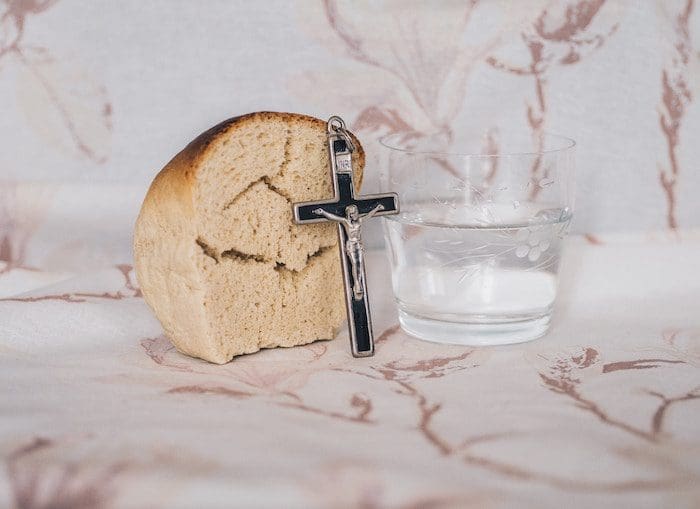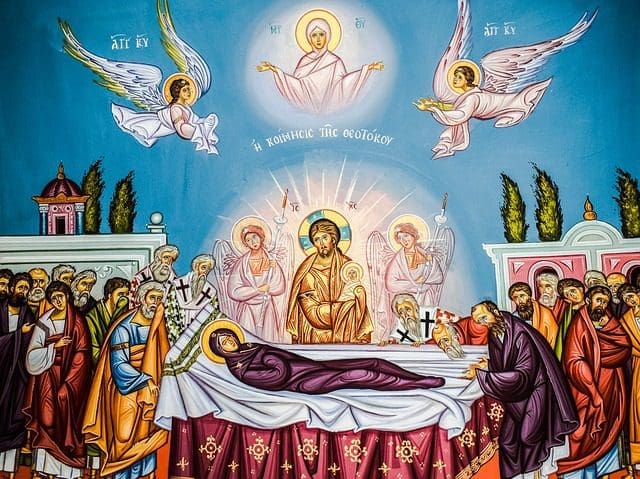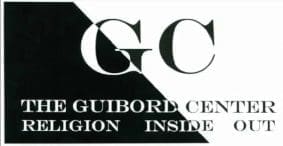Orthodox Christian Holy Days
Nearly all Orthodox churches follow the Julian calendar for their liturgical years. Since the Julian year is about 11.25 minutes longer than the solar year, by the 1500s it had fallen 10 days behind. In 1582, Pope Gregory XIII introduced the more accurate Gregorian calendar, which the Western Church has used since. The Julian calendar currently is 13 days behind the Gregorian year.
In 1923, a number of Orthodox churches adopted the Revised (New) Julian calendar. This new version aligns with the Gregorian calendar from March 1600 through February 2800. Pascha (Orthodox Easter) serves as the basis for the dates of other movable feasts such as Pentecost.

Great Lent
March 7 – April 23, 2022 Great Lent (or the Great Fast) is the Orthodox Lenten season. The church’s longest, strictest and most important fasting time, it leads up to Pascha, Orthodox Easter Sunday. As in Western Christian Lent, Great Lent lasts 40 days (but includes Sundays) and moves from year to year. It runs from Clean Monday, seven weeks before Pascha, through Lazarus Saturday, the day before Palm Sunday.
Starting the week before Lent, believers avoid meat and other animal products. Eggs and dairy are allowed. During the first five days, fasters eat nothing from Monday morning to Wednesday evening and take only two full meals, on Wednesday and Friday. Throughout the rest of Lent, believers mostly avoid meat and animal products, fish, dairy products, wine and oil. They may have wine and oil on weekends. During Holy Week, the last meal before Pascha is ideally Thursday evening and may include wine and oil. Great and Holy Friday, the year’s strictest fast day, is encouraged even for those who have not fasted strictly during Lent. The fast may end Saturday night or on Pascha.
Pascha
April 24, 2022 Pascha, or Orthodox Easter, celebrates Jesus Christ’s resurrection and is the year’s most important holy day. It usually falls one or five weeks after Western Christian Easter, which follows the Gregorian calendar.
Observances begin Saturday evening before midnight with the Odes of Lamentation. Next, as the Orthros of the Resurrection begins, the church is completely dark. The priest passes the flame to believers, who all light their own candles as a symbol of faith in Jesus’s resurrection as Savior. Often the priest leads the congregation outside in a procession. As the priest begins singing the hymn of Resurrection, all join in and the service takes on a joyful air. More hymns and a liturgy follow. Believers may light fireworks in celebration.
In the afternoon, believers gather again for prayer and hymns with lighted candles. They may also light fireworks at midnight, exchange red hard-boiled eggs, and enjoy sweet Pascha bread.

Feast of the Dormition of the Theotokos
August 28, 2022 Eastern Catholic and Orthodox churches observe this day as the Feast of the Dormition of the Theotokos. (Western churches know this day as the Feast of the Assumption of the Blessed Virgin Mary on August 15.) Commemorating “the falling asleep of the Mother of God,” the feast celebrates Mary’s death and bodily assumption by God into heaven.
In the Orthodox Church, the feasts of Mary celebrate believers’ own lives in Christ. Those who follow the Holy Mother in obedience and love will also be lifted up to eternal life. The Feast of the Dormition signals that all who hear and obey God’s Word will likewise receive her destiny.
Neither the tomb, nor death, could hold the Theotokos, who is constant in prayer and our firm hope in her intercessions. For being the Mother of Life, she was translated to life, by the One who dwelt in her virginal womb (Kontakion).
